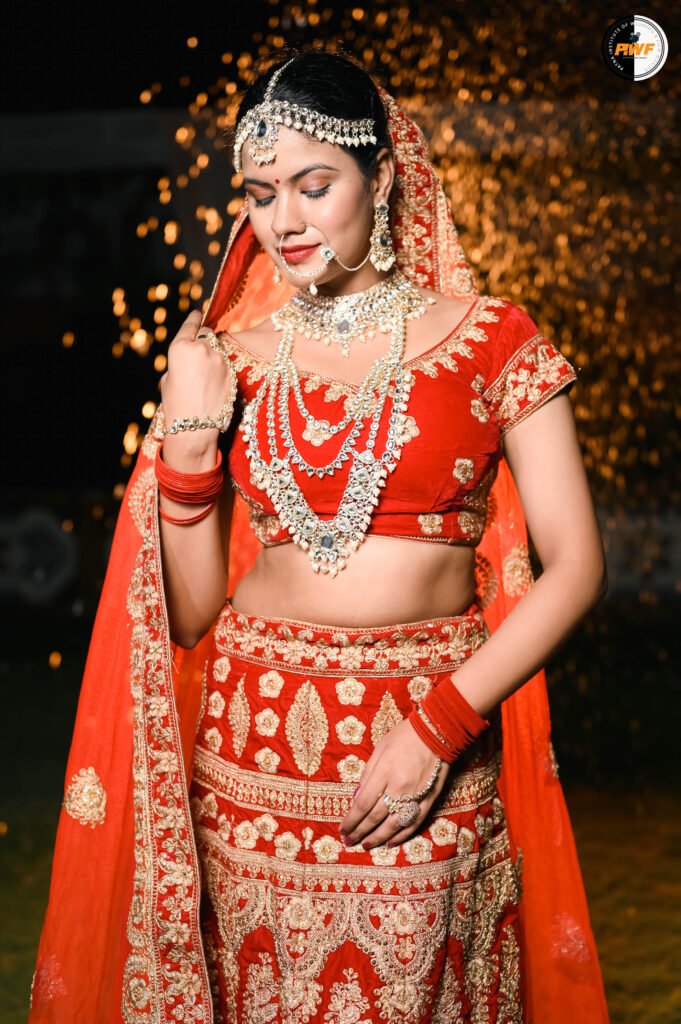
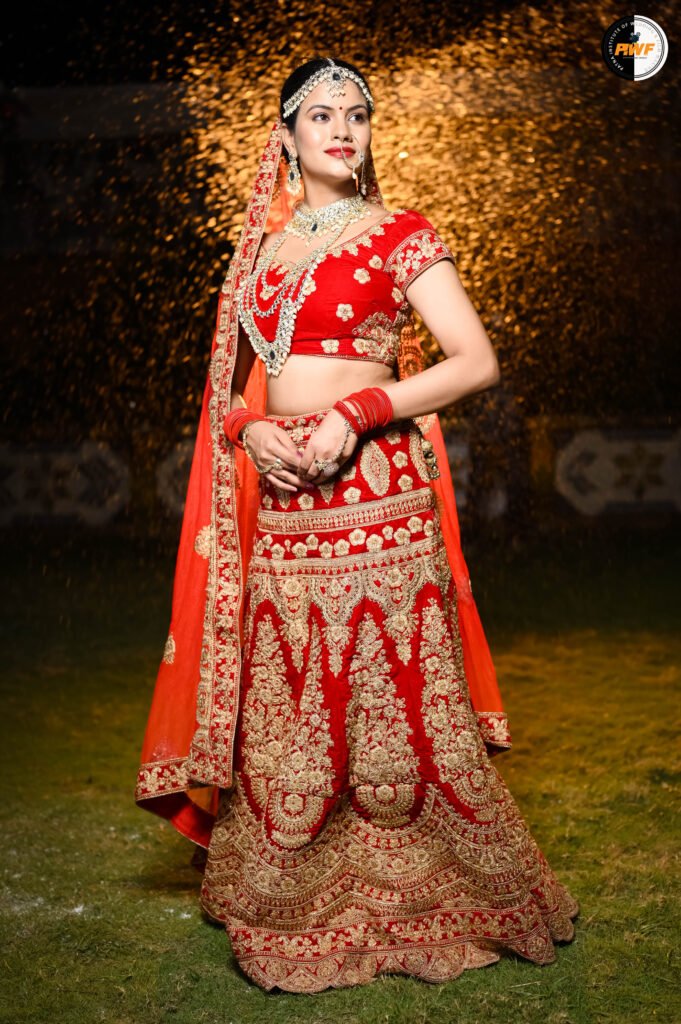
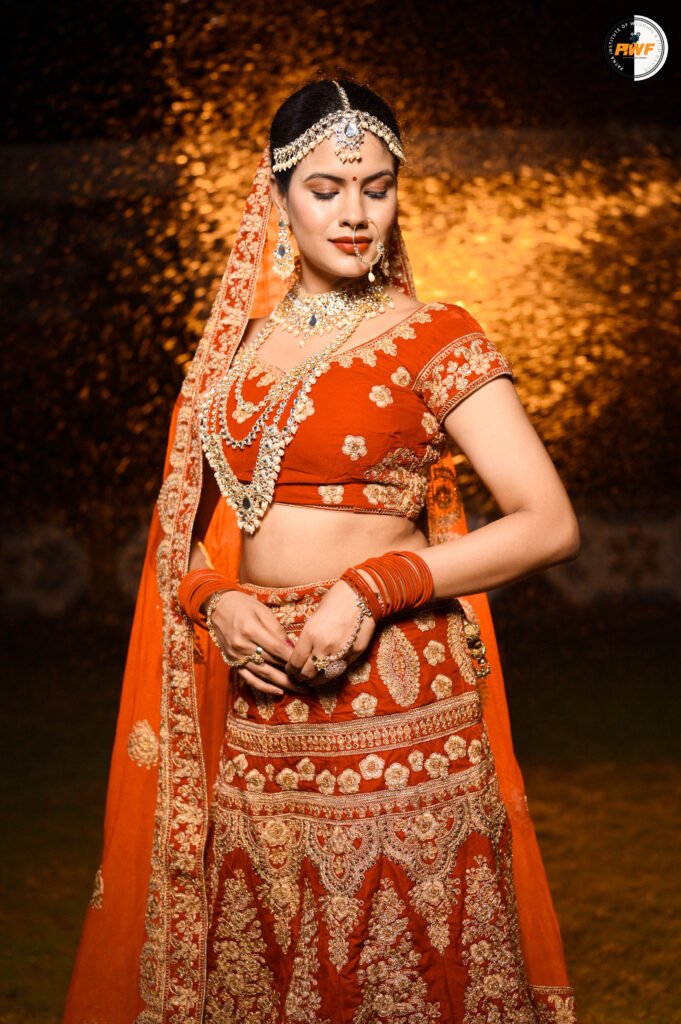

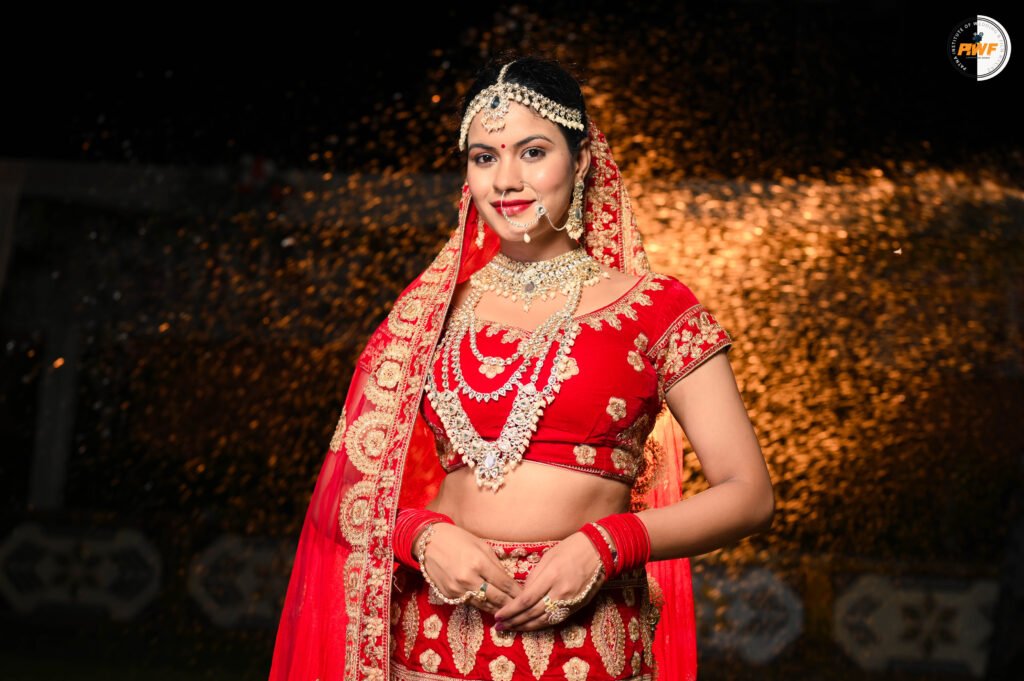
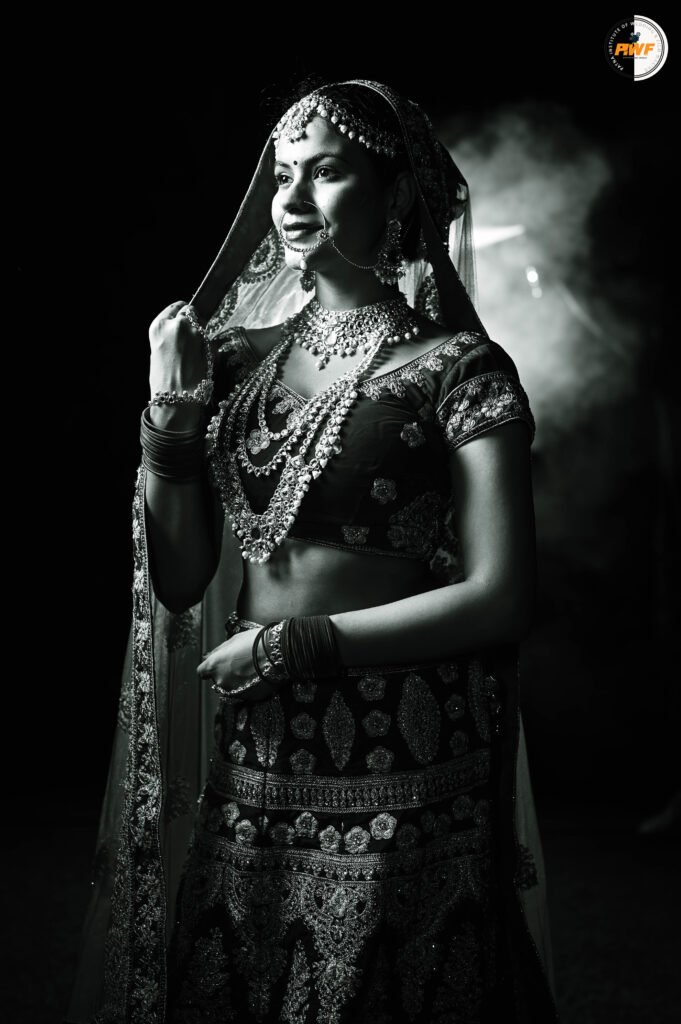


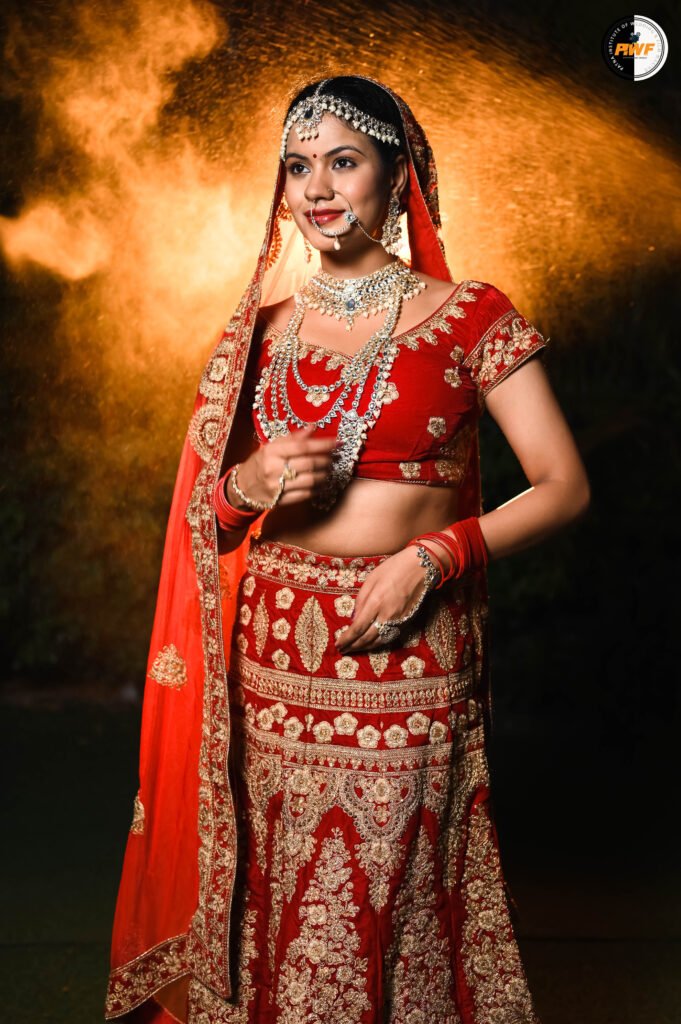

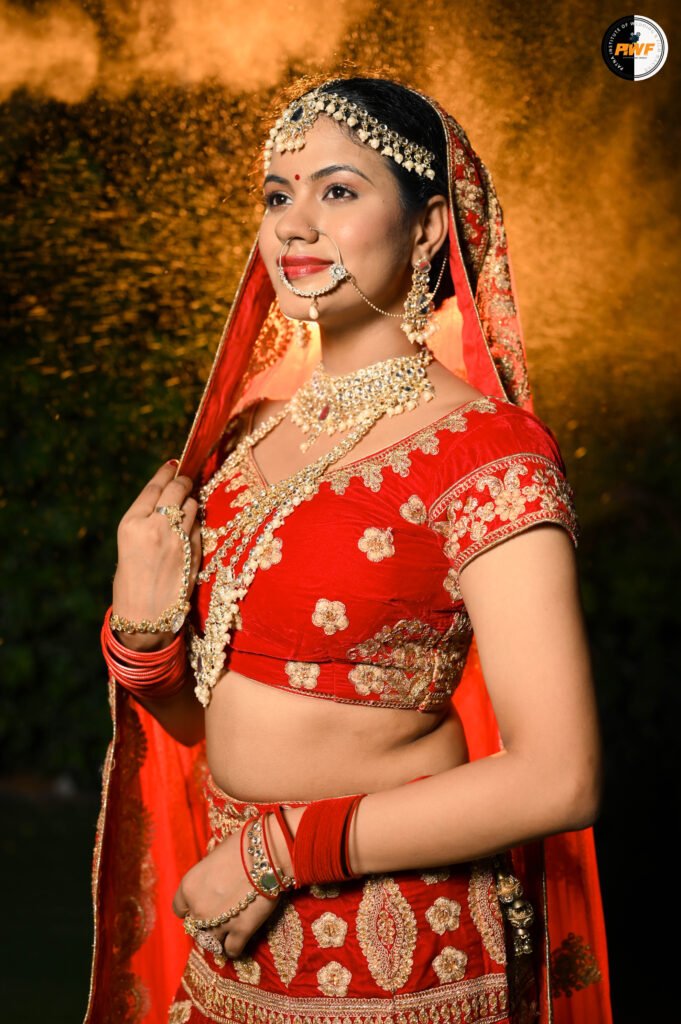
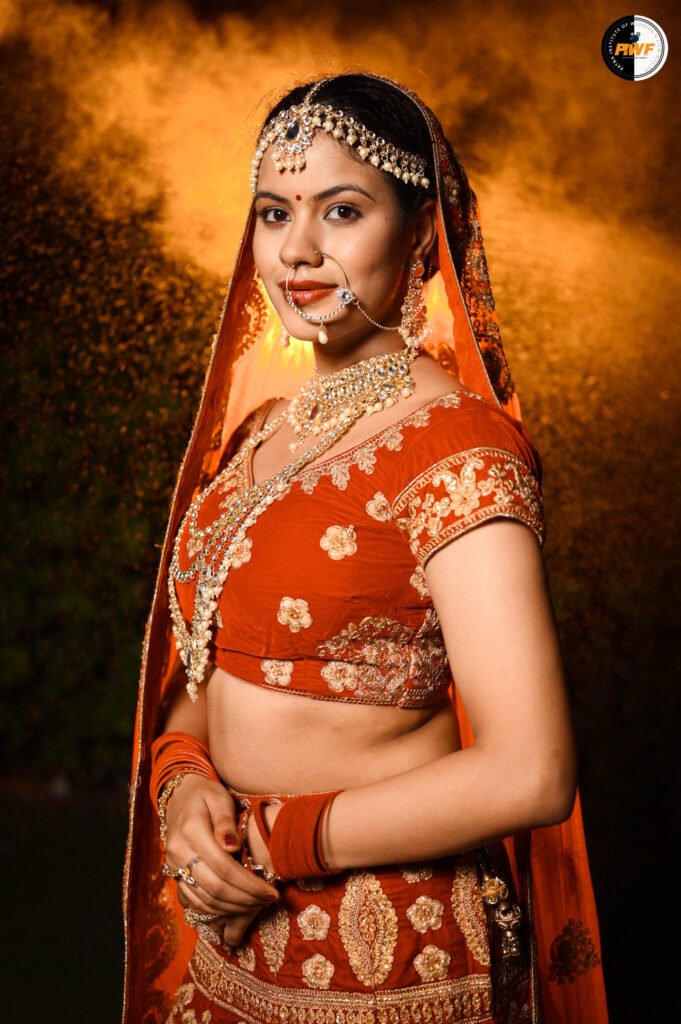

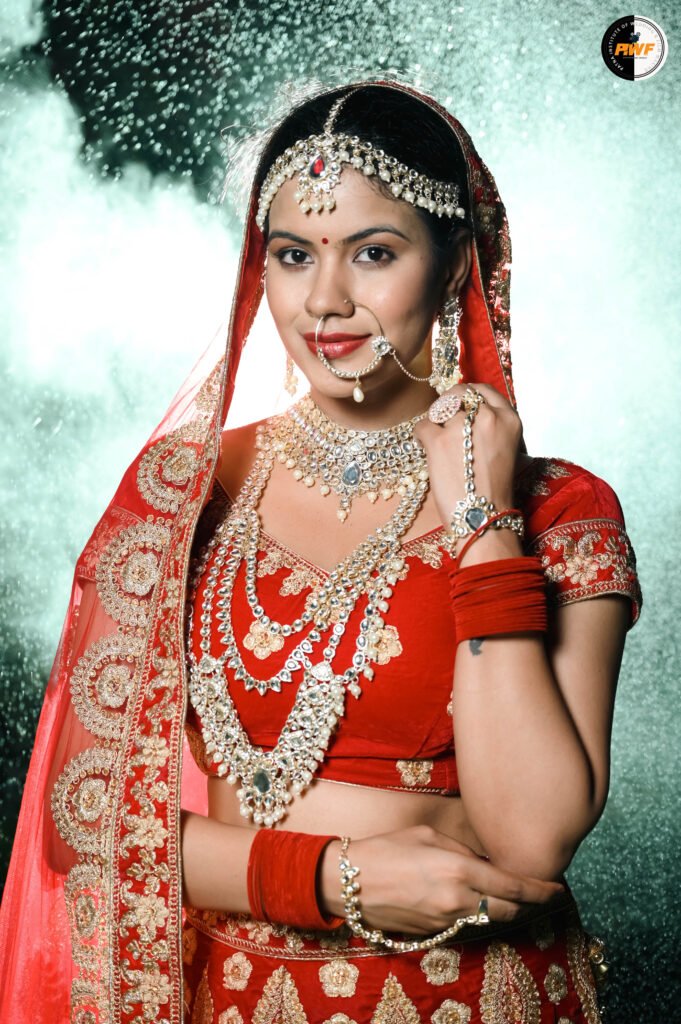
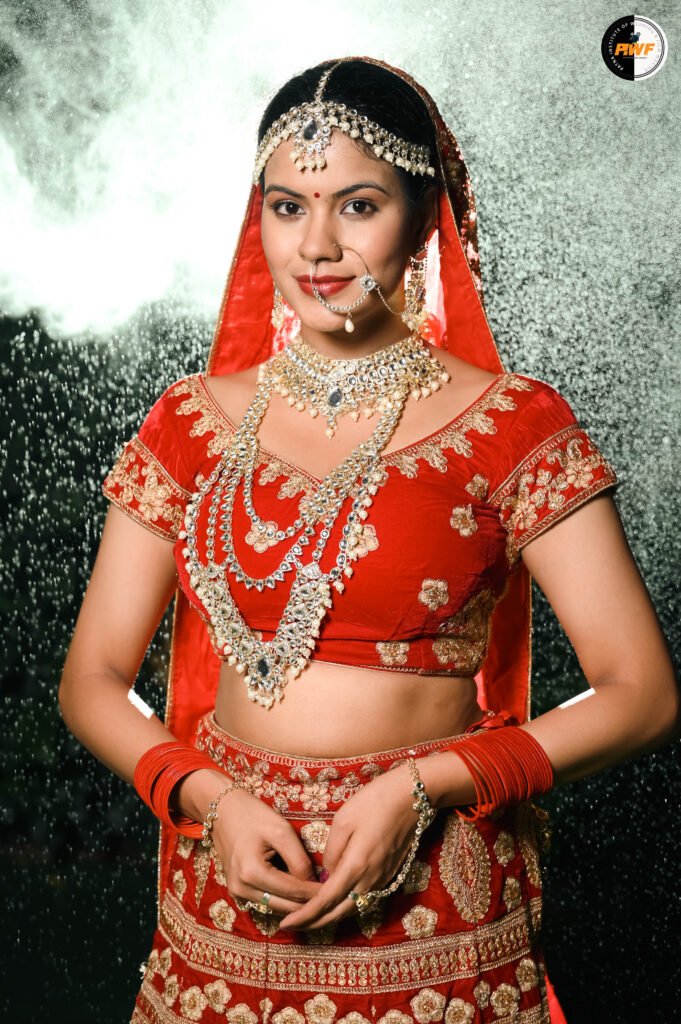

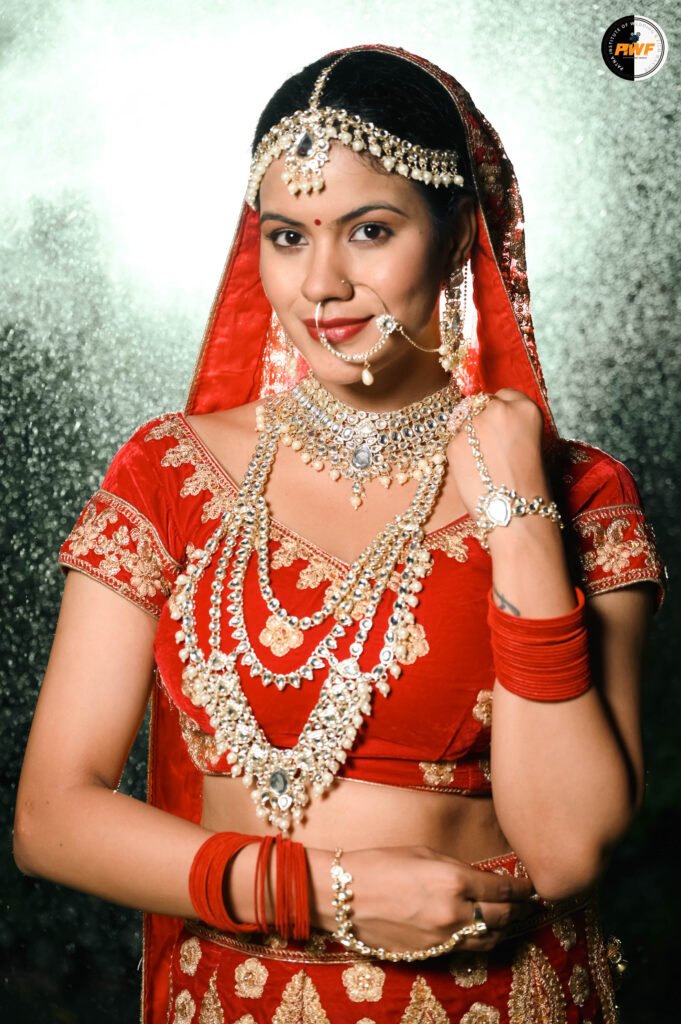
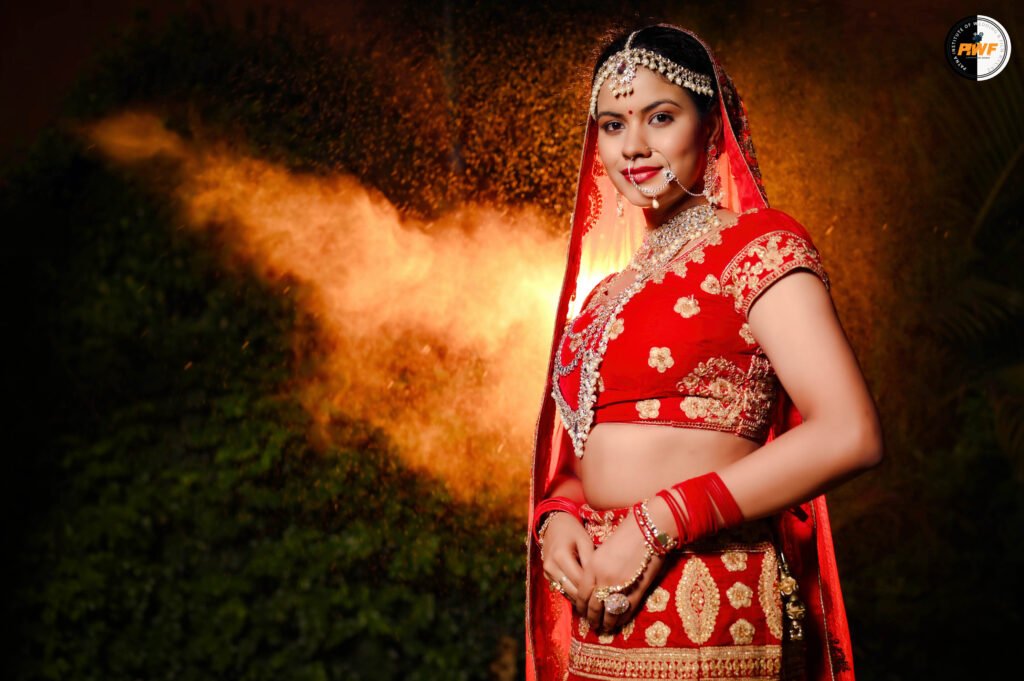

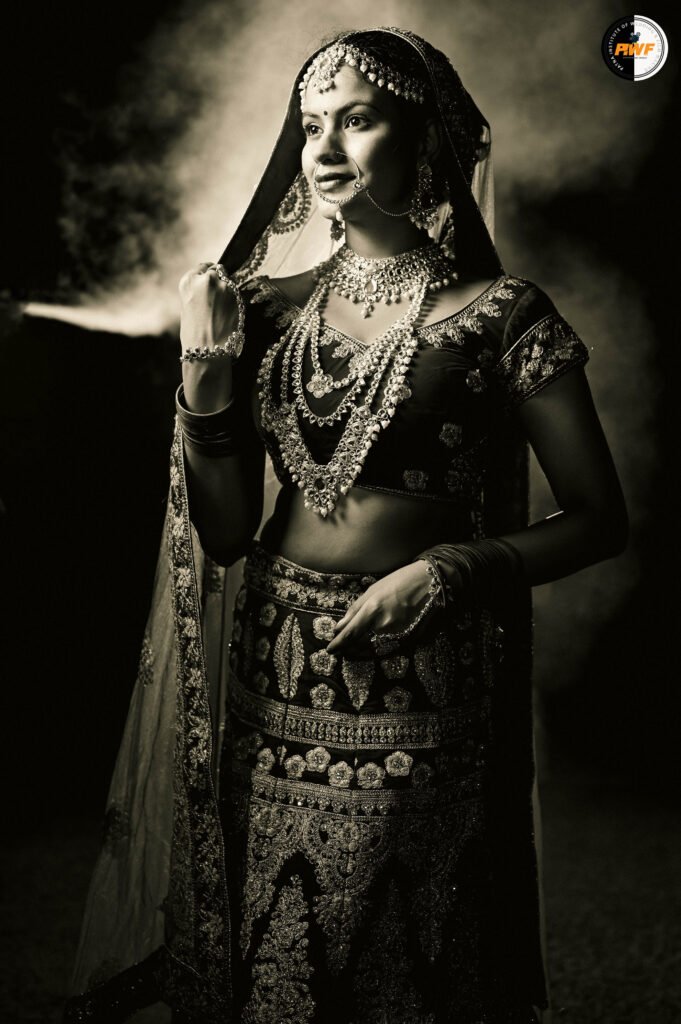

Photography is an art that demands both creativity and technical skill. At PIWF Institute, we strive to equip our students with the best techniques and practices to capture beautiful moments. In our latest photography class, we focused on bridal photography, emphasizing the use of a two-flash kit to achieve stunning results. Here, we share insights on the bride’s poses, composition, and the strategic use of lighting to enhance your bridal photography.
The Importance of Lighting in Bridal Photography
Lighting is a crucial element in photography, particularly in bridal shoots where the goal is to highlight the bride’s elegance and beauty. Using a two-flash kit allows photographers to create balanced lighting, eliminating harsh shadows and providing a soft, flattering glow. Here’s how you can set up and utilize your two-flash kit effectively:
- Key Light Placement: Position your primary flash (key light) at a 45-degree angle to the bride. This will serve as the main source of light, illuminating her face and dress while creating natural-looking shadows.
- Fill Light Adjustment: Place the second flash (fill light) on the opposite side, at a lower intensity, to fill in the shadows created by the key light. This setup helps in achieving a well-lit, balanced shot without overexposing the image.
Bride Poses and Composition Tips
- Classic Bridal Pose: Have the bride stand with her body slightly turned away from the camera, looking back over her shoulder. This pose highlights the dress’s details and the bride’s natural beauty. Ensure the key light illuminates her face and the dress’s intricate patterns.
- The Twirl: Capture the bride twirling in her dress. This dynamic pose showcases the movement and flow of the gown. Position the key light to capture the twirl’s motion, and use the fill light to prevent any motion blur.
- Seated Elegance: For a more intimate shot, have the bride sit gracefully, with her hands resting on her lap. Use the key light to focus on her face and upper body, while the fill light softly illuminates her dress and surroundings.
- Veil Shots: Utilize the bride’s veil to create a dreamy, ethereal effect. Have her hold the veil outwards or let it flow naturally. Position the key light behind the veil to create a soft glow, and use the fill light to maintain overall brightness.
Composition Techniques
- Rule of Thirds: Position the bride off-center, along the lines of the rule of thirds grid. This creates a balanced and aesthetically pleasing composition. Use the key and fill lights to emphasize the focal points.
- Leading Lines: Incorporate natural lines in the environment (like pathways, staircases, or architectural elements) to lead the viewer’s eye towards the bride. Properly lit leading lines enhance the composition’s depth and focus.
- Framing: Use elements like doorways, windows, or arches to frame the bride. This technique draws attention to her and adds context to the shot. Ensure both key and fill lights are adjusted to avoid unwanted shadows on the frame.
Conclusion
At PIWF Institute, our photography classes aim to inspire and educate aspiring photographers on the best practices in bridal photography. By mastering the use of a two-flash kit and understanding the nuances of poses and composition, our students can capture breathtaking images that highlight the bride’s beauty and elegance. Remember, practice is key, and experimenting with different lighting setups and poses will help you refine your skills. Happy shooting!



